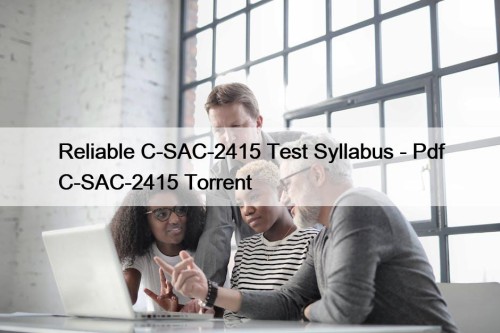Most Popular
 A00-485 Examcollection Questions Answers & Questions A00-485 Exam
A00-485 Examcollection Questions Answers & Questions A00-485 Exam
This is a gainful opportunity to choose A00-485 actual exam ...
 Reliable C-SAC-2415 Test Syllabus - Pdf C-SAC-2415 Torrent
Reliable C-SAC-2415 Test Syllabus - Pdf C-SAC-2415 Torrent
Our professionals constantly keep testing our C-SAC-2415 vce dumps to ...
 Certification 300-540 Training | 300-540 Test Book
Certification 300-540 Training | 300-540 Test Book
P.S. Free & New 300-540 dumps are available on Google ...



Valid 1z0-1084-24 Exam Bootcamp - 100% Pass First-grade 1z0-1084-24 - Valid Oracle Cloud Infrastructure 2024 Developer Professional Test Cost

DOWNLOAD the newest PDF4Test 1z0-1084-24 PDF dumps from Cloud Storage for free: https://drive.google.com/open?id=1YdJ18J3SeFzF4bGeifk_AtGLvo_HWVOf
If you want to get a higher position in your company, you must do an excellent work. Then your ability is the key to stand out. Perhaps our 1z0-1084-24 study materials can help you get the desirable position. At present, many office workers are willing to choose our 1z0-1084-24 study materials to improve their ability. So you can also join them and learn our study materials. You will gradually find your positive changes after a period of practices. Then you will finish all your tasks excellently. You will become the lucky guys if there has a chance. Our 1z0-1084-24 Study Materials are waiting for you to have a try.
Oracle 1z0-1084-24 Exam Syllabus Topics:
| Topic | Details |
|---|---|
| Topic 1 |
|
| Topic 2 |
|
| Topic 3 |
|
| Topic 4 |
|
| Topic 5 |
|
>> Valid 1z0-1084-24 Exam Bootcamp <<
100% Pass Oracle - 1z0-1084-24 Updated Valid Exam Bootcamp
The marketplace is competitive, especially for securing a well-paid job. Moving your career one step ahead with 1z0-1084-24 certification will be a necessary and important thing. How to get the 1z0-1084-24 exam dumps with 100% pass is also important. Oracle 1z0-1084-24 training topics will ensure you pass at first time. The experts who involved in the edition of 1z0-1084-24 questions & answers all have rich hands-on experience, which guarantee you the high quality and high pass rate.
Oracle Cloud Infrastructure 2024 Developer Professional Sample Questions (Q73-Q78):
NEW QUESTION # 73
Which "Action Type" option is NOT available in an Oracle Cloud Infrastructure (OCI) Events rule definition?
- A. Notifications
- B. Streaming
- C. Functions
- D. Email
Answer: D
Explanation:
An action is a response that you define for the rule to perform when the filter finds a matching event1. The action type specifies the service that you want to invoke by delivering the event message1. The following action types are available in OCI Events rule definition1:
* Streaming: Send to a stream from Oracle Streaming Service.
* Notifications: Send to an Oracle Notification Service topic.
* Functions: Send to an Oracle Functions Service endpoint. Email is not a valid action type for OCI Events rule definition. To send an email as an action, you need to use the Notifications service and subscribe to a topic with an email protocol2.
NEW QUESTION # 74
Which one of the following is NOT a valid backend-type supported by Oracle Cloud Infrastructure (OCI) API Gateway?
- A. ORACLE_FUNCTIONS_BACKEND
- B. HTTP BACKEND
- C. STOCK_RESPONSE_BACKEND
- D. ORACLE_STREAMS_BACKEND
Answer: D
Explanation:
Oracle Cloud Infrastructure (OCI) API Gateway supports various backend-types to handle incoming requests and route them to the appropriate backend service. However, "ORACLE_STREAMS_BACKEND" is not a valid backend-type in OCI API Gateway. "STOCK_RESPONSE_BACKEND" is a valid backend-type that allows you to configure static responses directly in the API Gateway without routing requests to any specific backend service. This can be useful for handling simple requests or returning predefined responses. "HTTP BACKEND" is another valid backend-type that enables routing requests to an HTTP backend service.
"ORACLE_FUNCTIONS_BACKEND" is a valid backend-type that allows you to route requests to Oracle Functions, which are serverless functions that can be used to execute specific logic or operations. However,
"ORACLE_STREAMS_BACKEND" is not a valid backend-type in OCI API Gateway. The API Gateway does not have native support for Oracle Streams as a backend service. Oracle Streams is a feature of Oracle Database that provides a publish-subscribe mechanism for data replication and distribution within an Oracle Database environment. It is not directly integrated as a backend service in OCI API Gateway.
NEW QUESTION # 75
Your organization has deployed their e-commerce application on Oracle Container Engine for Kubernetes (OKE) and they are using the Oracle Cloud Infrastructure Registry (OCIR) service as their Docker image repository. They have deployed the OKE cluster using the 'custom create' option, and their Virtual Cloud Network (VCN) has three public subnets with associated Route Tables, Security Lists, and Internet Gateway.
However, their application containers are failing to deploy. On investigation, they discover that the images are not being pulled from the designated OCIR repository, even though the YAML configuration has the correct path to the images. What is a valid concern here that needs to be further investigated?
- A. OKE cluster needs to have a secret with the credentials of their OCIR repository and use that secret in the Kubernetes deployment manifest.
- B. Identity and Access Management (IAM) credentials need to be added for each user that deploys applications to the OKE cluster.
- C. Security List rule for TCP port 22 needs to be added to connect to the OCIR service.
- D. VCN hosting the OKE cluster worker nodes needs to have a NAT gateway to access OCIR repositories.
Answer: A
Explanation:
A valid concern that needs to be further investigated in this scenario is whether the OKE cluster has a secret with the credentials of the Oracle Cloud Infrastructure Registry (OCIR) repository and if that secret is being used in the Kubernetes deployment manifest. Here's why this concern is relevant: Access to the OCIR repository: In order for the OKE cluster to pull images from the OCIR repository, it needs proper authentication credentials. These credentials are typically provided in the form of a secret, which contains the necessary information to authenticate with the registry. Secret in the deployment manifest: The Kubernetes deployment manifest defines how the application containers should be deployed. It includes specifications such as the container image, resource requirements, and environment variables. To pull images from a private repository like OCIR, the deployment manifest needs to reference the appropriate secret that contains the registry credentials. If the images are not being pulled from the designated OCIR repository, it suggests that either the secret with the OCIR credentials is missing or it is not properly referenced in the deployment manifest. Further investigation should focus on verifying the presence and correctness of the secret, as well as confirming that it is correctly referenced in the deployment manifest for the application containers. By ensuring the presence of the secret and proper configuration in the deployment manifest, the OKE cluster will have the necessary credentials to access the OCIR repository and successfully deploy the application containers.
NEW QUESTION # 76
(CHK_4>3) Your development team decides to create and deploy some business logic to serverless Oracle Functions. You are asked to help facilitate the monitoring, logging, and tracing of these services. Which is NOT valid about troubleshooting Oracle Functions?
- A. Oracle Functions tracing is enabled at the function level.
- B. Oracle Functions metrics are available at both the function and application level.
- C. Oracle Functions invocation logs are enabled at the application level.
- D. Oracle Functions invocation is enabled by default
Answer: A
Explanation:
The option that is NOT valid about troubleshooting Oracle Functions is: "Oracle Functions tracing is enabled at the function level." In Oracle Functions, tracing is not enabled at the function level. Instead, tracing is enabled at the application level. When you enable tracing for an application, it applies to all the functions within that application. Tracing allows you to capture detailed information about the execution flow and performance of the functions, helping you analyze and debug issues. The other options mentioned are valid:
Oracle Functions invocation logs are enabled at the application level. Invocation logs provide visibility into the details of function invocations, including input, output, duration, and any error messages. These logs are generated and stored by Oracle Functions, and you can access them for troubleshooting and monitoring purposes. Oracle Functions invocation is enabled by default. Once you deploy a function, it becomes invocable by default. You can configure different triggers to invoke the function, such as HTTP requests, scheduled events, or events from other Oracle Cloud Infrastructure services. Oracle Functions metrics are available at both the function and application level. Metrics provide insights into the usage, performance, and behavior of functions. They can include metrics such as invocations per minute, average duration, and error counts. These metrics can be viewed in the Oracle Cloud Infrastructure Console or accessed programmatically through APIs. It's important to note that the specific configuration and behavior of monitoring, logging, and tracing in Oracle Functions may depend on the version, configuration, and options you have chosen. It is recommended to refer to the Oracle Functions documentation and consult the official documentation for accurate and up-to-date information on troubleshooting and monitoring Oracle Functions.
NEW QUESTION # 77
You developed a microservices-based application that runs in an Oracle Cloud Infrastructure (OCI) Container Engine for Kubernetes (OKE) cluster. Your security team wants to use SSL termination for this application.
What should you do to create a secure SSL termination for this application using the fewest steps possible?
- A. Create a self-signed certificate and its corresponding key. Create a Kubernetes secret using the certificate and the key. Then add these annotations to the Kubernetes service: annotations: service.beta.
kubernetes.io/oci-load-balancer-ssl-ports: "443" service.beta.kubernetes.io/oci-load-balancer-tls-secret:
ssl certificate-secret - B. Generate a self-signed certificate using Let's Encrypt. Use that certificate on OCI Load Balancer. Create the Kubernetes service using this load balancer.
- C. Create a self-signed certificate and its corresponding key. Create a Kubernetes secret using the certificate and the key. Then add these annotations to the Kubernetes service: annotations: service.beta.
kubernetes.io/oci-load-balancer-ssl-ports: "443" service.beta.kubernetes.io/oci-load-balancer-security- list management-mode: "Frontend" - D. Add these annotations to the kubernetes service: annotations: service.beta.kubernetes.io/oci-load- balancer-ssl-ports: "443" service.beta.kubernetes.io/oci-load-balancer-ssl-secret-key: ssl secret-key
Answer: A
Explanation:
The correct answer is: "Create a self-signed certificate and its corresponding key. Create a Kubernetes secret using the certificate and the key. Then add these annotations to the Kubernetes service: annotations: service.
beta.kubernetes.io/oci-load-balancer-ssl-ports: '443' service.beta.kubernetes.io/oci-load-balancer-tls-secret: ssl certificate-secret." To create a secure SSL termination for your microservices-based application running in an OCI Container Engine for Kubernetes (OKE) cluster, you can follow these steps: Create a self-signed certificate and its corresponding key: Generate a self-signed SSL certificate and its private key using a tool like OpenSSL. Create a Kubernetes secret: Create a Kubernetes secret using the certificate and key obtained in the previous step. This secret will securely store the certificate and key within the Kubernetes cluster. Add annotations to the Kubernetes service: Modify the Kubernetes service that exposes your application and add the following annotations to enable SSL termination: annotations: service.beta.kubernetes.io/oci-load- balancer-ssl-ports: '443' (specify the SSL port as 443) annotations: service.beta.kubernetes.io/oci-load- balancer-tls-secret: ssl certificate-secret (specify the name of the Kubernetes secret containing the certificate and key) By following these steps, you can create a secure SSL termination for your application using a self- signed certificate and Kubernetes secret. The annotations added to the Kubernetes service ensure that the SSL port is configured correctly and the TLS secret is utilized for SSL termination when traffic reaches the load balancer. The other options provided are not the most suitable approaches for achieving secure SSL termination in an OCI Container Engine for Kubernetes (OKE) cluster: Adding annotations related to the OCI load balancer SSL secret key is not the correct approach for SSL termination in this scenario. Using Let's Encrypt to generate a self-signed certificate and configuring it on the OCI Load Balancer is not necessary when you can create and manage the SSL certificate within the Kubernetes cluster using a Kubernetes secret.
NEW QUESTION # 78
......
Through years of persistent efforts and centering on the innovation and the clients-based concept, our company has grown into the flagship among the industry. Our company struggles hard to improve the quality of our 1z0-1084-24 exam prep and invests a lot of efforts and money into the research and innovation of our 1z0-1084-24 Study Guide. Our brand fame in the industry is famous for our excellent 1z0-1084-24 study guide. High quality, considerate service, constant innovation and the concept of customer first on our 1z0-1084-24 exam questions are the four pillars of our company.
Valid 1z0-1084-24 Test Cost: https://www.pdf4test.com/1z0-1084-24-dump-torrent.html
- New 1z0-1084-24 Exam Labs 🔧 1z0-1084-24 Real Torrent 🍦 Dumps 1z0-1084-24 Cost 📰 Open website 「 www.testsdumps.com 」 and search for ( 1z0-1084-24 ) for free download 😄1z0-1084-24 Pass Test Guide
- 100% Pass Oracle - 1z0-1084-24 - Pass-Sure Valid Oracle Cloud Infrastructure 2024 Developer Professional Exam Bootcamp 💁 Open 《 www.pdfvce.com 》 enter ▶ 1z0-1084-24 ◀ and obtain a free download 🚪1z0-1084-24 Questions Answers
- Quiz Oracle 1z0-1084-24 - Oracle Cloud Infrastructure 2024 Developer Professional Marvelous Valid Exam Bootcamp 🌵 Search for ➥ 1z0-1084-24 🡄 on ⮆ www.examsreviews.com ⮄ immediately to obtain a free download ▶Reliable 1z0-1084-24 Exam Papers
- 100% Pass 2025 Oracle 1z0-1084-24 –Valid Valid Exam Bootcamp 🍢 Open ⮆ www.pdfvce.com ⮄ and search for ➡ 1z0-1084-24 ️⬅️ to download exam materials for free 🌻Test 1z0-1084-24 Valid
- Dumps 1z0-1084-24 Cost 🎸 1z0-1084-24 Latest Exam Questions 🦹 1z0-1084-24 Pass Test Guide 🍺 Go to website ✔ www.passtestking.com ️✔️ open and search for ➽ 1z0-1084-24 🢪 to download for free 🥌Sample 1z0-1084-24 Questions
- Latest updated Valid 1z0-1084-24 Exam Bootcamp | Amazing Pass Rate For 1z0-1084-24 Exam | Top 1z0-1084-24: Oracle Cloud Infrastructure 2024 Developer Professional 🌤 Download ➡ 1z0-1084-24 ️⬅️ for free by simply entering ▛ www.pdfvce.com ▟ website 🥽Test 1z0-1084-24 Topics Pdf
- Quiz Oracle 1z0-1084-24 - Oracle Cloud Infrastructure 2024 Developer Professional Marvelous Valid Exam Bootcamp ⏰ Search for ➽ 1z0-1084-24 🢪 and download it for free immediately on ▶ www.dumps4pdf.com ◀ 🗓Latest 1z0-1084-24 Exam Questions Vce
- 100% Pass Oracle - 1z0-1084-24 - Pass-Sure Valid Oracle Cloud Infrastructure 2024 Developer Professional Exam Bootcamp 🕞 Search for ⇛ 1z0-1084-24 ⇚ and download it for free immediately on 「 www.pdfvce.com 」 👽1z0-1084-24 Questions Answers
- 1z0-1084-24 Questions Answers 🆖 1z0-1084-24 Exam Questions 🏜 1z0-1084-24 Pass Test Guide 🧭 Download 「 1z0-1084-24 」 for free by simply searching on ➽ www.pass4test.com 🢪 🚅1z0-1084-24 Pass Test Guide
- How to Crack the Challenging Oracle 1z0-1084-24 Exam Easily and Quickly? 🦒 Easily obtain { 1z0-1084-24 } for free download through ▷ www.pdfvce.com ◁ 🧀1z0-1084-24 Latest Exam Questions
- Quiz Oracle 1z0-1084-24 - Oracle Cloud Infrastructure 2024 Developer Professional Marvelous Valid Exam Bootcamp 🦜 Search for 【 1z0-1084-24 】 on 「 www.prep4pass.com 」 immediately to obtain a free download 🍾Reliable 1z0-1084-24 Exam Papers
- 1z0-1084-24 Exam Questions
- www.0435.online www.91kanhua.com www.hefeiyechang.com user.xiaozhongwenhua.top www.gtcm.info 5577.f3322.net 101.33.203.112:9988 douerdun.com www.9yi8.xyz www.peiyuege.com
DOWNLOAD the newest PDF4Test 1z0-1084-24 PDF dumps from Cloud Storage for free: https://drive.google.com/open?id=1YdJ18J3SeFzF4bGeifk_AtGLvo_HWVOf
Tags: Valid 1z0-1084-24 Exam Bootcamp, Valid 1z0-1084-24 Test Cost, Simulation 1z0-1084-24 Questions, 1z0-1084-24 Valid Exam Experience, Accurate 1z0-1084-24 Answers